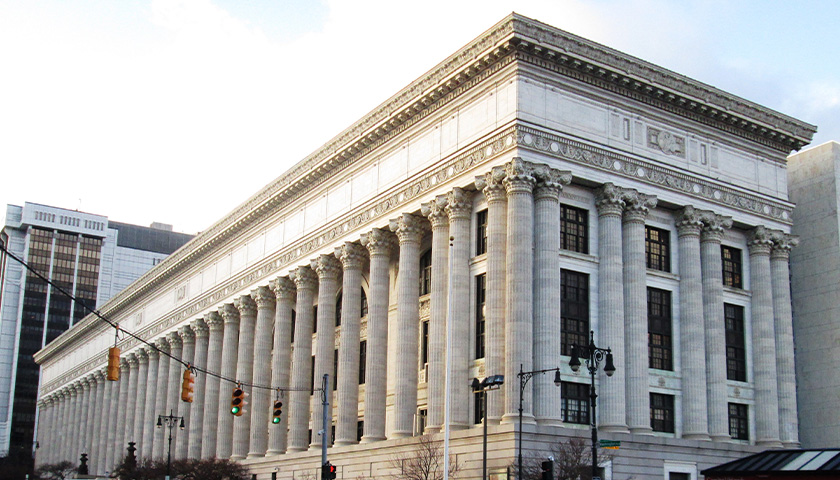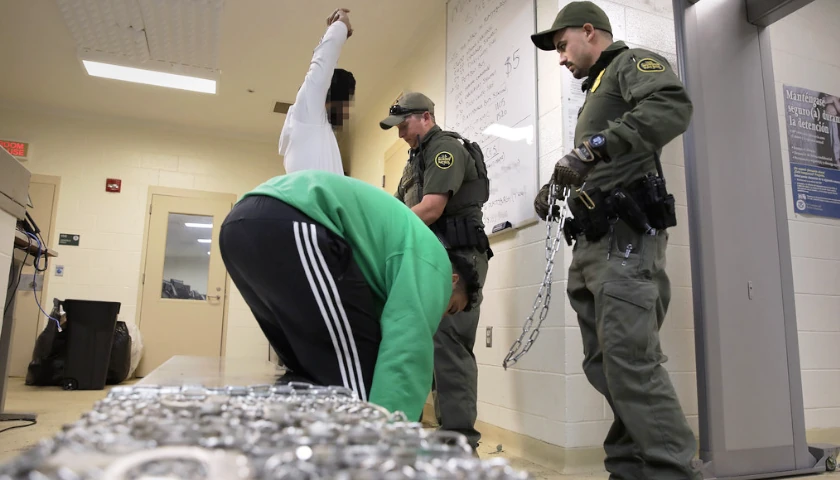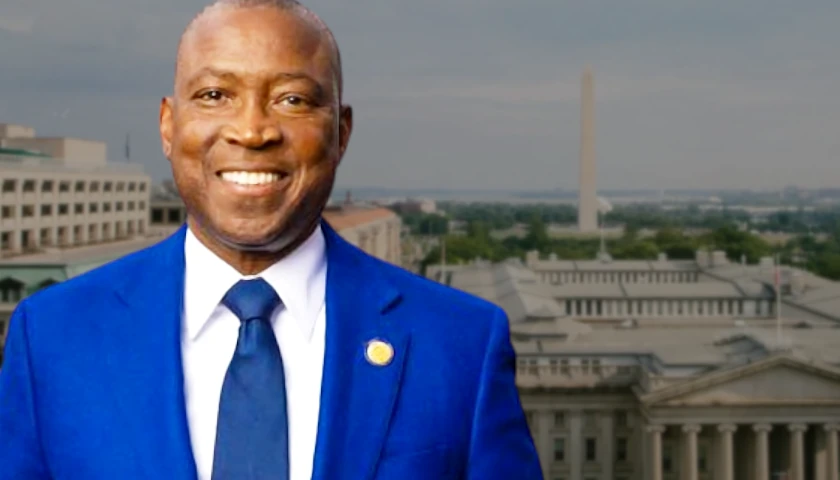by John Murawski
As recently as last summer, few people outside academia had heard of critical race theory, whose central claim is that racism, not liberty, is the founding value and guiding vision of American society. Then, President Trump issued an executive order last September banning the teaching of this “malign ideology” to federal employees and federal contractors.
Trump’s ban was blocked by a federal judge in December and immediately revoked by Joe Biden upon occupying the White House in January. Since then, federal agencies and federal contractors have resumed staff training on unconscious bias, microaggressions, systemic racism and white privilege – some of the most common but also most disputed concepts associated with the four-decade-old academic theory.
Now critical race theory is about to face a major real-world test: a spate of lawsuits alleging that it encourages discrimination and other illegal policies targeting whites, males and Christians. But unlike Trump’s executive order, which ran into First Amendment problems by prohibiting controversial speech, the lawsuits name specific policies and practices that allegedly discriminate, harass, blame and humiliate people based on their race.
The common thread of these legal challenges is the inescapable logic that making accommodations for critical race theory will erode the nation’s anti-discrimination law as it has developed since the 1960s. This would mean replacing the colorblind ideal of treating all people equally, which has been widely viewed as the crowning achievement of the civil rights movement, with a contrary strategy: implementing race-based policies, which can range from affirmative action to reparations for compensating African Americans for the injustices of the past and for producing equitable outcomes in the future.
“Critical race theory is a Trojan horse of sorts,” said David Pivtorak, a Los Angeles lawyer representing two white men who are suing two California state environment agencies. “It disguises itself as the gold standard of fairness and justice but, in fact, relies on vilification and the idea of permanent oppressor and oppressed races. Its goal is not ensuring that all people play by the same rules, regardless of race, but equity, which is a euphemism for race-based outcomes.”
About a dozen lawsuits and administrative complaints have been filed since 2018, with another wave planned this summer by conservative public interest law firms and private attorneys. Their goal is to draw attention to some of the more pronounced practices and win court judgments to slow down the spread of CRT in K-12 schools, government agencies other organizations.
A pair of lawsuits filed in 2019 by four white women against the New York City public school system allege that a diversity trainer told employees, “White colleagues must take a step back and yield to colleagues of color,” and that they should “recognize that values of White culture are supremacist.” The California suit filed last year by the two white men alleges that the state hosted a discussion series in 2020 in which speakers stated “that any disparate outcomes in society must be the result of white supremacy.”
A 2019 complaint filed by an Illinois public school teacher led to a finding that as part of a year-long course on equity and diversity, seventh- and eighth-graders participated in a white privilege awareness exercise that required them to remain “in silence” and with “eyes lowered” as they responded to a facilitator’s prompts. A 2020 lawsuit filed by a 12th-grade biracial student and his African American mother says that a civics class in a Nevada charter school taught that “reverse racism doesn’t exist” and that “people of color CANNOT be racist.”
Critical race theory scholars assured RealClearInvestigations that white people should never be fired, penalized or gratuitously humiliated for the historical accident of being born white. But organizations should be granted wide leeway in adopting diversity training and equity policies, they say, even if asking white people to acknowledge their unearned privilege and think about their complicity in white supremacy makes them feel singled out and induces anxiety.
“Part of being an employee or a public official or a school teacher requires you to appreciate your own standing – your identity and your positionality,” said Margaret Burnham, a law professor at Northeastern University and a former Massachusetts state judge, using CRT terms that describe racial and gender power hierarchies.
“Anything that is about the education of the person so that they can do a better job is fair game,” Burnham said. “Just like you have to learn new technologies, new languages, I consider this part of being an employee, part of being in a public space where you’re going to interact with other people.”
Proponents of critical race theory say the lawsuits are a form of white denialism that confirms the pervasiveness of the problem that CRT exposes. Many critical race theorists believe that the United States has functioned as an elaborate affirmative action scheme to empower and enrich white males, a strategy that depends on a certain degree of coverup.
“I see these lawsuits as a last gasp attempt of those who benefit from the racial hierarchy to cling to the power and the privileges that have been associated with whiteness from the beginning of the country,” said André Douglas pond Cummings (who writes his name in lowercase letters), a business law professor at the University of Arkansas at Little Rock who has taught courses on corporate justice and “Hip Hop & the American Constitution.”
“Critical race theory challenges the very legitimacy of the legal system in which these lawsuits are situated,” Cummings said. “Treating people with dissimilar histories equally, where some have been historically oppressed, can lead to unjust results and outcomes, thereby requiring a focus on results and outcomes, not on blind process, with the goal being equal economic opportunity and equity.”
The central unifying insight of critical race theory is that racism is embedded in the U.S. legal system and social structures, “so that you don’t have to think about it anymore and you can have racism without racists at this point,” said Robert Westley, a Tulane University law professor who specializes in critical race theory and reparations.
“You don’t have to be an avowed racist in order for there to be race-based outcomes in this society,” Westley said, noting that confronting these matters “is going to entail talking about things that make a lot of people very uncomfortable.”
CRT rejects the foundational premises of classical liberalism – such as legal neutrality and individual rights – and from that perspective, colorblindness is not understood as a strategy to overcome racism but as a method to perpetuate it.
“It’s a white ideology,” Burnham said. “Colorblindness really comes into fashion as a means of denying the persistence of racial stratification in the United States.”
The lawsuits face a number of challenges, a point borne out by early setbacks some of the claims have experienced so far, including the defeat of Trump’s executive order on free-speech grounds. In another case, lawyers dropped the discrimination allegations in one of the first such lawsuits, filed in 2018 against the Santa Barbara Unified School District in California, because, they said, students and staff who supported the lawsuit were “deathly afraid” of repercussions if they spoke out and came forward publicly as plaintiffs.
Claimants generally have to prove the alleged discrimination is severe and pervasive. They also have to overcome the freedom-of-speech rights of those who are professing to be dismantling systemic racism. What’s more, lawyers on both sides say that courts traditionally defer to employers and educators to set policy on workplace training and classroom curricula, a built-in restraint on activist judges.
Perhaps the biggest wild card in these lawsuits is the staggering cultural shift of the past five years, during which many of the precepts of CRT have become widely accepted, especially among many in the nation’s intelligentsia and the professional managerial class.
President Biden has adopted the language and made equity part of his platform, including a proposal to establish an Equity Commission “to support the rights of Black, Brown and Native farmers.” Immediately upon taking office, he issued an “Executive Order on Advancing Racial Equity” to address systemic racism and “affirmatively” promote equity and racial justice in the federal government.
“Our Nation deserves an ambitious whole-of-government equity agenda that matches the scale of the opportunities and challenges that we face,” the executive order states.
This paradigm shift has catapulted “anti-racist” experts like diversity trainer and best-selling “White Fragility” author Robin DiAngelo into the stratosphere of fame. Another beneficiary of the zeitgeist is Ibram X. Kendi, the Andrew W. Mellon Professor in the Humanities at Boston University who runs the school’s Center for Antiracist Research. Kendi is the author of the 2019 bestseller “How to Be an Antiracist,” which contains a succinct antiracist formula that rests on the distinction between bad discrimination (racism) and good discrimination (antiracism): “The only remedy to racist discrimination is antiracist discrimination. The only remedy to past discrimination is present discrimination. The only remedy to present discrimination is future discrimination.”
The nation’s current anti-discrimination law does not make such a distinction, and would read Kendi’s proposal as absurd as claiming that there’s a meaningful difference between good theft and bad theft; instead, all discrimination is wrong in the existing legal framework, with the exception of limited, narrowly tailored exemptions that are subject to strict scrutiny by the courts.
A sampling of recent lawsuits and complaints shows how critical race theory practices have played out in a variety of circumstances.
The suit against the New York City Department of Education alleges that employees were told at a diversity retreat that “there is White toxicity in the air and we all breathe it in.” Examples given included the Protestant work ethic and being socialized to be “defensive.” Such messages about “interrogating Whiteness” were repeated over the course of a year, during which time four white employees who later filed suit were accused of privilege, shamed, demoted and replaced by African Americans. The pair of lawsuits, filed in 2019, are in the discovery phase as the Department of Education and the lawyers for the four white women suing exchange documents and evidence.
A fall 2020 civics curriculum at a Nevada charter school encouraged students to “unlearn” the oppressive structures within their families, their religion and their intersectional identities. The teacher, who identified herself in class materials as a bisexual agnostic with a mental health disability, asked 12th-graders to reflect on the parts of their identity that “have privilege attached to it.” according to a discrimination suit filed by the biracial male student and his black mother who allege he was coerced to affirm a political ideology against his conscience and his Christian faith. The case, filed last December, is headed for trial after a judge, saying the allegations raise “some serious constitutional issues,” refused to toss it out.
– – –
John Murawski contributes to RealClearInvestigations.
Photo “New York State Education Building, Albany, New York” by Beyond My Ken CC 4.0.




